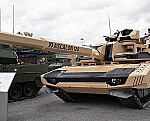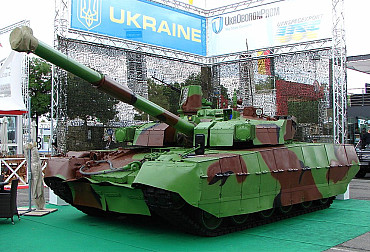Chinese Rail Gun – claiming world leadership in the domain
Chinese scientific and industrial organisations have been working on the subject of railguns since at least the 2000s. Dozens of them have built and tested several experimental artillery installations of this type, including a sample that could be installed on a mother ship. For obvious reasons, the development and testing is carried out behind closed doors, but some of the details, which are of great interest, still appear in the open press.
The English-language Chinese publication South China Morning Post drew attention to a recent publication in the scientific journal Transactions of China Electrotechnical Society, written by a team of employees from the University of Naval Engineering. A team of scientists led by Lu Junyong reported on the testing of an experimental rail gun. Because of the secrecy of the subject, not all the data on the events carried out is reported. In particular, the timetable for the tests described remained unknown. It is known that the article was sent to the journal in August 2023, indicating the approximate time of completion of the tests and subsequent work.
The Chinese scientists described the approximate progress of the work and also mentioned the problems identified during the test firings. In addition, the topic of solving these problems using the most modern technologies is addressed. It would appear that the development of a fundamentally new artillery complex has been a success. At the same time, they are unable to clarify the future fate of the project. According to a publication in the Transactions of China Electrotechnical Society, the tests used an experimental railgun of an unnamed type and a guided munition. The latter was created specifically for the new weapon, taking into account its specific features and requirements. The article mentions certain details, but does not describe the general appearance of the gun and projectile. The tests were carried out with the help of the PLA Navy.
It appears that the experimental weapon fired a guided projectile at a conditional target. The gun accelerated the ammunition to a velocity of over 5M (over 1700 m/s) and sent it to a height of around 15km. Then, using its aerodynamic surfaces and the resulting energy, the projectile glided along a flat trajectory. The flight of the experimental munitions lasted around 3 minutes. However, the range of the shot was not specified. Such a test demonstrated the fundamental operability of the new artillery system and confirmed the ability of the railgun to accelerate a projectile to hypersonic velocity. However, the event was considered a failure. The fact is that the projectile deviated from the initial trajectory, did not reach the required height and did not show the calculated range.
Video: China LATEST Giant Rail Gun to Shoot Smart Bomb 9 Miles Into the Sky / YouTube
In previous wind tunnel tests and computer simulations, no such problems arose and the projectile flew conventionally at the calculated range. The specialists from the University of Naval Engineering therefore had to carry out further research and find the causes of this negative phenomenon. In their project, Lu Junyong and his colleagues used the principle of stabilising a projectile by rotation, which is characteristic of modern artillery. In theory, this corresponded to the specific features of the rail gun and hypersonic flight speeds. In practice, however, unforeseen effects appeared.
Analysis of the telemetry data from the experimental projectile showed that during flight, it maintained the high rotation speed obtained at launch. In addition, all the calculations were based on the fact that the rotation would slow down as the trajectory progressed, as is the case with 'ordinary' projectiles. Maintaining the rotation speed influenced the orientation of the munitions in space, the consumption of kinetic energy and, consequently, the flight trajectory. This effect was called spin lock and we began to study it. Laboratory experiments have shown that this phenomenon is not frequent and occurs irregularly, and the calculation methods available do not allow it to be predicted. At the same time, it became clear that the true internal and external ballistics of the railgun and its ammunition are more complex than the mathematical models used.
In later work, it was possible to find the reason for the fixed rotation speed and the failure of the practical tests. For example, when fired from a rail gun, colossal loads are applied to the projectile. High overloads during acceleration can lead to deformation of the external parts of the ammunition – rudders or stabilisers. This change in the shape of the parts and the violation of symmetry affects the aerodynamics and flight parameters. In this case, the deterioration in aerodynamics is not enough to cause destructive loads.
The search for solutions to the problem identified was carried out using computer modelling. The efficiency of this process would have been improved by the use of artificial intelligence. As a result, a number of ideas have been found to prevent the rotation speed from being fixed or to get rid of it in flight. It is proposed to reconsider the design of the projectile itself. Its parts must resist overload. It is also possible to control the rotation speed using standard ammunition rudders. Another solution is to increase the initial velocity of the projectile to optimum values that prevent the velocity from being fixed.
According to an article in the Transactions of China Electrotechnical Society, Chinese scientists encountered unexpected problems during the test phase of the rail gun. In subsequent work, they were able to find several solutions at once. However, the subsequent events have not yet been made public by the press. It is not known to what extent the design of the gun and its ammunition changed as a result of the new research. Nor is it known which of the proposed solutions is of the greatest theoretical interest. It is not stated whether the new solutions have been tested in practice and, if so, which of them proved to be the best.
However, even without this information, an interesting picture emerges. A publication in a scientific journal shows that Chinese science and industry are continuing to work on rail guns and are achieving some results. Prototypes are being developed and built, and tests are being carried out to confirm calculations and/or identify new circumstances and problems. If necessary, new research is carried out to clarify existing data, correct errors, etc. China develops new weapons and military equipment projects in the greatest secrecy. The existence of new samples is generally known quite late, when new developments in the field of metal are implemented and tested. The Railgun programme is no exception.
At present, only one experimental railgun of Chinese design is reliably known. An artillery mount with such a weapon was first spotted in 2018, and by then it had already been installed on the carrier ship. Subsequently, tests of such a product were reported and positive results were obtained. At the same time, the technical details of the project and the characteristics of the gun were not reported. Clearly, the construction of a pilot plant for the vessel was preceded by the construction of similar fixed systems for laboratory and field testing. In addition, after 2018, new rail guns with certain features could be developed and assembled, but they have not yet been reported to the public.
It is not clear what type of development is referred to in the article written by specialists from the University of Naval Engineering. It is possible that it is a rail gun previously installed on the ship, but the use of other products cannot be ruled out. Either way, the next series of tests has uncovered new and unknown problems and successfully solved them. The concept of a rail gun is particularly complex and the development of projects of this type requires a well-developed scientific and technical base. In this respect, only a few countries occupying leading positions in the world scientific and technological arena have such projects. China entered this circle a long time ago, having successfully tested its developments on land and sea-based test sites.
Until recently, the United States could boast of great successes in this field. However, their projects, even though they have made progress, have come up against significant difficulties. As a result, all work was halted several years ago. The American industry has moved in a promising direction, and China is now claiming world leadership in this field.










